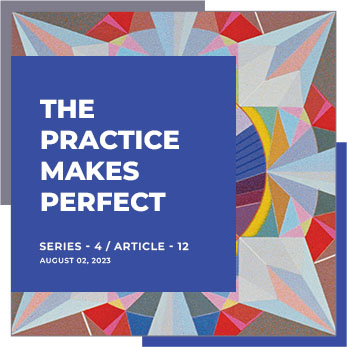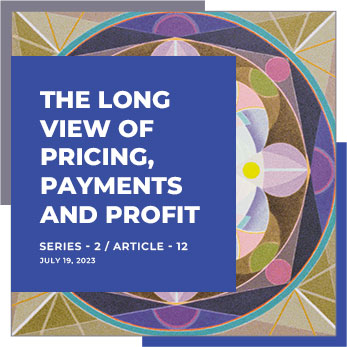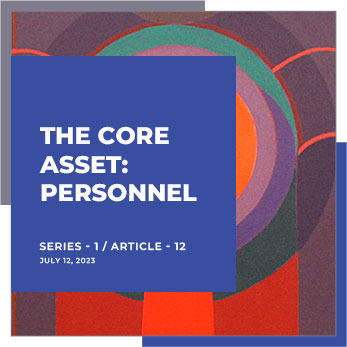Ever heard of Reginald Heber Smith? Perhaps not by name, but indeed by legacy. He is the lawyer who came up with the notion of The Billable Hour and the practice of law has never been the same…until now.
Recently, both multi-lawyer firms and solo practitioners have begun to weigh the value of hourly billing versus the value of value billing, but, as the debate continues, the unspoken question is – whose interests are we considering? The lawyers? Or the clients?
Time, The ideal Metric
After graduating from Harvard Law School in 1913, Mr. Smith headed the Boston Legal Aid Society. He developed a new system for the business management side of the law practice and streamlined its case-cost efficiency while working with Harvard Business School professors. After World War I, he was hired as managing partner of Hale and Dorr, where his partners requested him to create records for ‘time’. It occurred to him that ‘time itself ’ was the ideal organizing tool, and he created a simple form, listing the client, case, description of work performed, and the time spent in six-minute increments. Thus, in 1919, was born the ‘billable hour timesheet’.
Behavioral Economics and Client Psychology
For the past 100 years, hourly billing has prevailed as the standard billing practice throughout the legal profession, with newly-minted lawyers being billed out at one rate, mid-level associates at another, and partners and senior partners billing out at top dollar. But recently, new pricing models have been proposed that would either eliminate hourly billing or consign that billing methodology to certain ‘specialists’ possessing subject matter expertise not readily available on the market. In addition, concepts such as behavioral economics, marketing, and client psychology are being taken into consideration before embarking on a ‘value-added’ system over the venerated hourly rate. The billable hour concept, as noted by Mr. Smith, was a simple one. Determining value, however, is much more complex.
Time vs. Outcome
It is not just lawyers who are grappling with the issue of how to formulate and present value pricing to clients. 3 CPAs founded the VeraSage Institute as a think tank dedicated to promulgating and teaching value-based pricing, economics, and human capital development to professionals and businesses worldwide. Their institute fellows include knowledge professionals who want to share their experiences with value pricing and come from the fields of accounting, consulting, law, technology, and advertising.
Ronald J. Baker, one of the founders of VeraSage Institute, narrated how he determined early on that the billable hour was a “lousy customer experience” because the client did not know the real cost of the engagement until after the work was done. “We have been taught that as professionals we sold time,’’ Baker explains. “But no client buys time, they buy outcome. And we, as professionals, have to focus on the outcome and not the task. The problem with the billable hour is that it focuses on the task.”
“A LAWYER’S TIME AND ADVICE ARE HIS STOCK IN TRADE”
Value The Benefit to the Client
Then, how does a lawyer determine what their ‘value’ is professionally speaking, and, just as importantly, how does the lawyer convey that to the client? To start with, there are definitions according to one value-pricing consultant, ‘Value-based pricing means determining the price of a service based on the benefits it provides for the consumer.’ But, is that ‘benefit’ the one that the lawyer believes they are providing, or the one the client understands they will be getting?
The challenge for the lawyer who wants to practice law profitably while retaining and soliciting clients is to find that sweet spot where the lawyer maximizes revenue while charging clients fees they are willing to pay. Therefore, determining value with both perspectives in mind is key to arriving at value-based pricing.
But, added to the equilibrium complexity is the factor that ‘no two clients are alike.’ Take, for example, a real estate closing the value of those services as comprehended by a young couple just starting out and buying their inexpensive starter house will likely be quite different from the value perceived by the executive buying his multi-million-dollar home. Although the technical side of document preparation, transfer tax declarations, title search, etc., maybe just about the same, it is highly unlikely that young couple will be willing to pay the value-based fee that the executive buyer would agree to.
Cost-plus Valuation
A standard method of determining value is to start with the cost-plus scenario, first determining what the service will cost to provide to the client and then sufficiently yet realistically adding on the ‘plus’, without which the lawyer would only be working to cover his payables and not for himself. The American Bar Association has recommended an 8-step process for assisting lawyers in determining value in value-pricing scenarios. Among them is the recommendation that closed-out cases be subject to an ‘After Action Review’ to post-mortem how a given agreement meshed with the realities of accomplishing the outcome.
ARAs, CLDs, and Scope Creep
In response to rising cost pressures, corporate legal departments (CLDs) have been particularly involved in advancing the ‘Alternative Fee Arrangement’ (AFA), which seeks to streamline legal spending while gaining some measure of cost certainty by linking the price for work performed to a milestone, business output, or the final outcome, as opposed to time spent. AFAs are typically linked to specific deliverable or other quantifiable metrics and identity fixed, capped, or benchmark-phased fees over a given period.
For a law firm or solo practitioner, the AFA can remain ‘time-bound’ whereby the lawyer agrees to the AFA as predicated upon an anticipated number of hours it will take to deliver the desired deliverable to the client. A variation and time-based AFAs allocate some of the ‘scope creep’ risk associated with straight AFAs by providing for the unexpected, unforeseen direction that a project may take beyond the originally identified scope of work.
Let’s talk… Money
Aside from the critical element of developing a sense of value and cost before undertaking a project for a client, another area where lawyers are known to be lax is their hesitancy to talk ‘money’ upfront. This has often led to the issuance of vague, general retainer letters to clients that, although they may have met the minimal ethics requirements, failed to truly apprise them of the final cost. For example, an Arizona practitioner whose firm went through several iterations of billing models noted, ‘ Attorneys must get better at talking about money with clients. ’To sum up, when it comes to value-billing and AFAs in general, ‘partnering’ with your client at the onset can avoid a host of disputes down the road and likely enhance the attorney-client relationship in the long run.
Executive Summary
The Issue
Responding to the value-billing, Alternative Fee Arrangement (AFAs) billing models are emerging in opposition to the ‘time-honored’ hourly billing regimen.
The Gravamen
Lawyers must do a better job of discussing legal fee arrangements with their clients upfront, and, to the extent practicable, involve their clients in carving out an agreement that identifies the desired results and benefits to them.
The Path Forward
AFAs combined with scope creep protection provisions for the lawyer help to bring down legal spend for CLDs while minimizing the law firm’s problem of outstanding receivables.
Action Items
Analyze Your Costs:
Sit down and have a real discussion with yourself, and your colleagues, as to what your hard and soft costs are for taking on various types of work in your practice. Then calculate how much ‘cost-plus’ you need to add on in order to stay afloat.
Prepare AFAs:
Draft typical AFA templates that you can easily modify on a case-by-case basis as suits the particular project and client.
Consider Variations:
Consider what measure should be used to arrive at your compensation, be it a specific deliverable, or otherwise, and, whether the fee will be fixed, capped, or benchmark-phased over a given period.
Read Your Client:
Have a frank discussion with your client as to what his or her expectations are, and, as necessary, drive home the point about the benefit to a client and how the proposed value-billing arrangement will be the most cost-effective means of achieving the endpoint.
Review, Review, Review:
Conduct post-mortem reviews after cases are closed-out to evaluate where the AFA benefitted your firm and the client, and where such arrangements can be tweaked for future services rendered to this or other clients.
Further Readings
- https://www.americanbar.org/news/abanews/publications/youraba/2017/may-2017/bury-the-billable-hour-and-implement-value-billing-in-your-law-f/
- https://www.verasage.com/
- https://www2.deloitte.com/content/dam/Deloitte/us/Documents/Tax/us-tax- value-based-pricing-aligning-the-cost-and-value-of-legal-services.pdf
- https://www.wilmerhale.com/en/insights/publications/slice-of-history- reginald-heber-smith-and-the-birth-of-the-billable-hour-august-9-2010
- https://hbr.org/2016/08/a-quick-guide-to-value-based-pricing
- https://www.forbes.com/sites/forbesbusinessdevelopmentcoun- cil/2017/07/27/value-based-pricing-two-easy-steps-to-implement-and- two-common-pitfalls-to-avoid/?sh=af2c82264136







